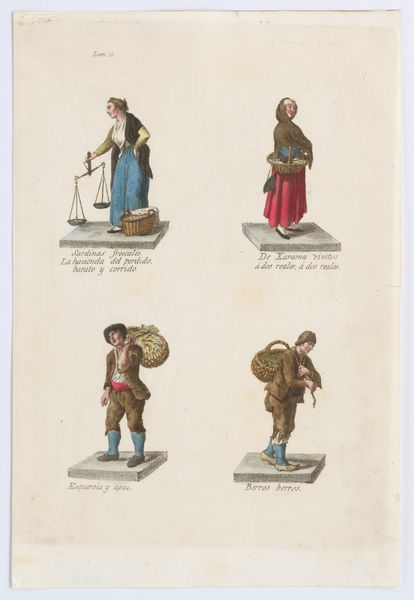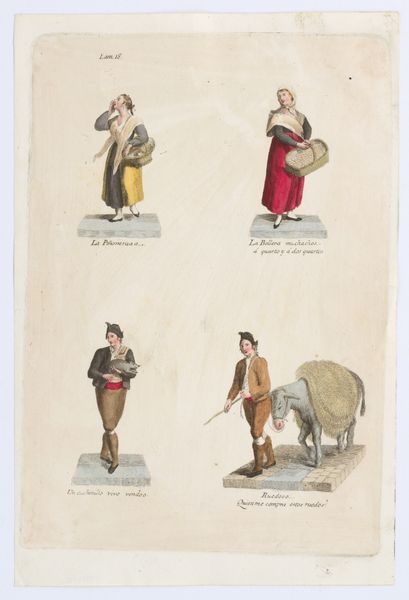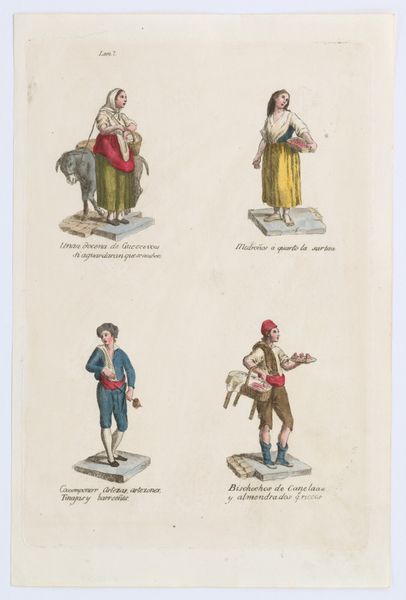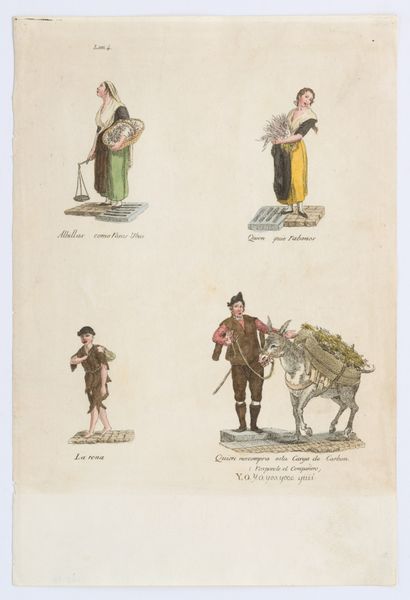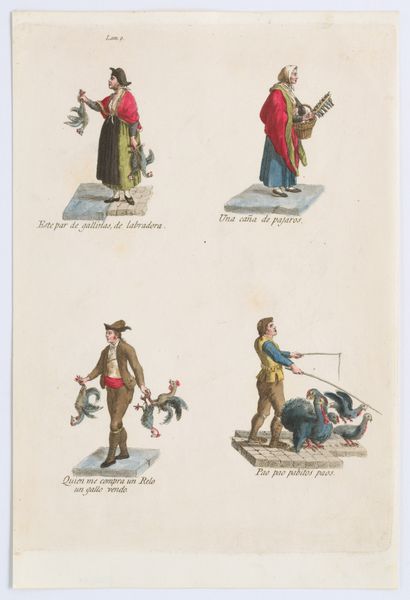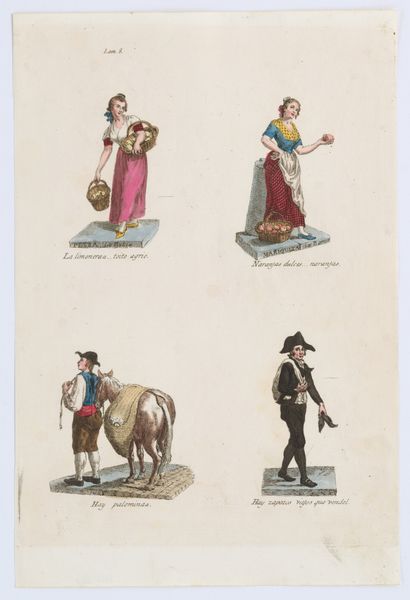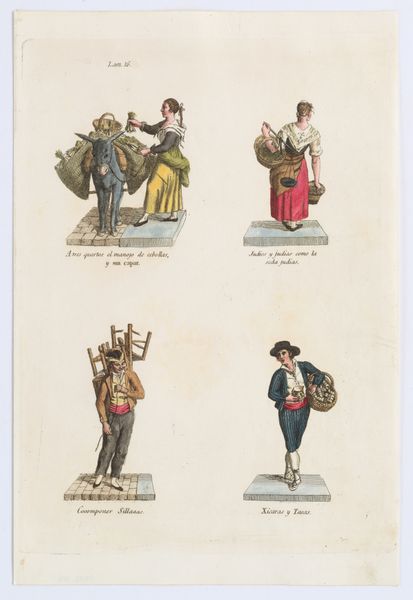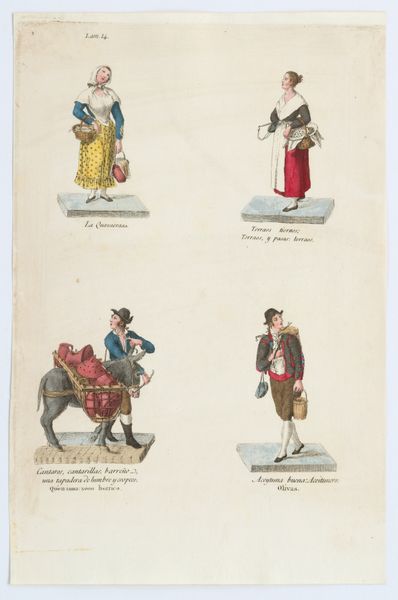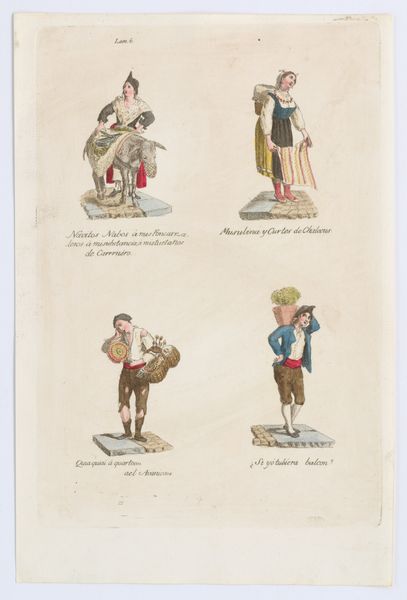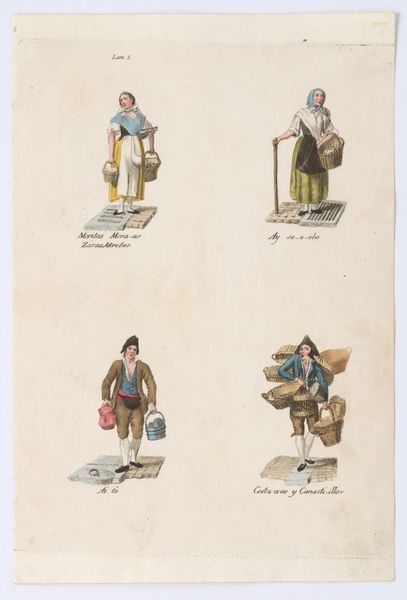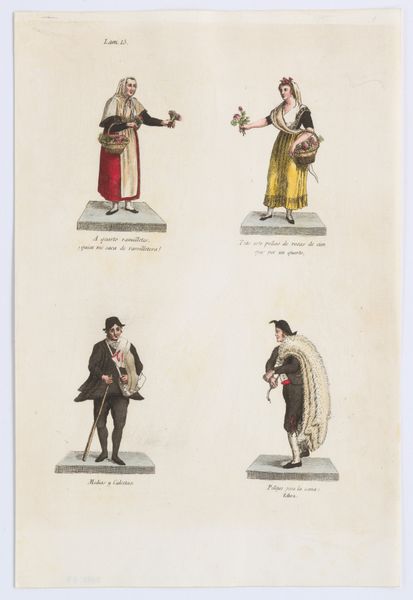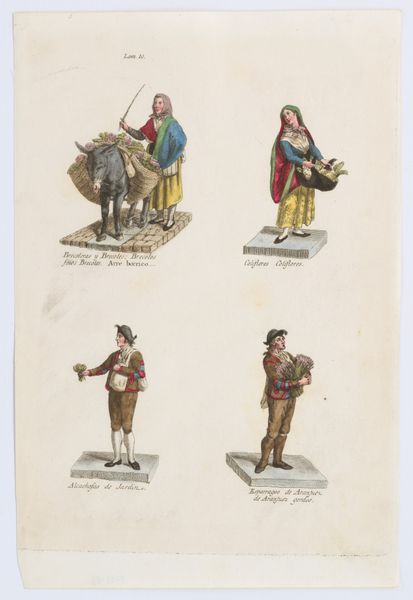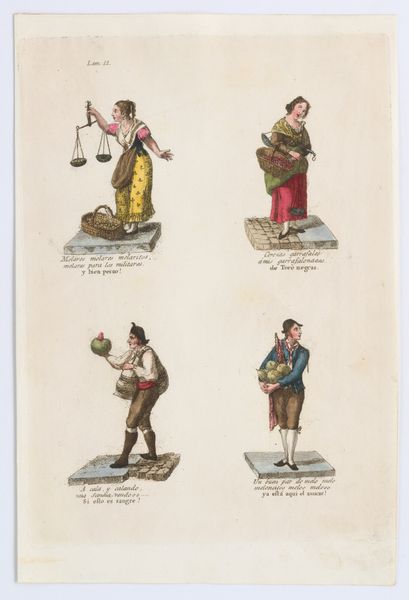
Plate 5: four street vendors from Madrid selling sweet albellanitas dulces, alacalienties, tender cuts and a knife grinder, from 'Los Gritos de Madrid' (The Cries of Madrid) 1809 - 1817
0:00
0:00
drawing, coloured-pencil, print, watercolor
#
drawing
#
coloured-pencil
#
water colours
# print
#
caricature
#
watercolor
#
coloured pencil
#
romanticism
#
genre-painting
#
history-painting
Dimensions: Sheet: 11 13/16 × 7 7/8 in. (30 × 20 cm)
Copyright: Public Domain
Curator: At first glance, it appears to be a somewhat naive, though charming, depiction of street life. Editor: Indeed. Let's delve into this print a bit. This is plate five from Miguel Gamborino’s series, ‘Los Gritos de Madrid,’ or 'The Cries of Madrid,' created between 1809 and 1817. Curator: "Cries" eh? It has an interesting, detached feeling to it; the four vendors almost appear to float in a white space, like isolated memories. Are these idealized types, or specific individuals? Editor: More types, I suspect. During this era, there was a growing fascination with capturing everyday life, fueled by Romanticism's interest in the common person and also a reflection of Spanish society under French occupation. Curator: The vendor of ‘albellanitas dulces,’ those little sweets, holding her basket: she strikes me as carrying echoes of earlier devotional figures, the Madonna perhaps. The basket evokes the cornucopia, a vessel of goodness…a far cry from the grim realities of war and occupation I would expect for this historical period. Editor: An astute observation. But even idealized images served a purpose. Consider the tradition of street cries. This series documents—and perhaps even romanticizes—the traditional occupations that were slowly fading. The figure grinding knives in this plate, for example. How much longer would he be practicing that craft? Curator: Each character inhabits their own symbolic frame, it appears. Even the seemingly humble knife grinder seems to have a touch of divine ordinance. In his stooped labor he performs an important function within this societal framework. But, his stance has also a darker interpretation… like a shrouded doomsday messenger? Editor: Fascinating. See how you draw so easily upon traditional visual repertoires, whereas my interest goes immediately to the socio-political ramifications of it all. I see this image as something of a record. Not necessarily of what IS, but how its maker wants history to remember the world that he documents. The figures seem almost archetypes. Curator: Perhaps both readings intertwine, and neither are mutually exclusive of each other? Editor: I appreciate you calling attention to those echoes of sacred iconography in a piece otherwise devoted to seemingly profane commercialism. Curator: Likewise, I would not have noticed so readily the effect of external historical forces. A truly multifaceted work.
Comments
No comments
Be the first to comment and join the conversation on the ultimate creative platform.
